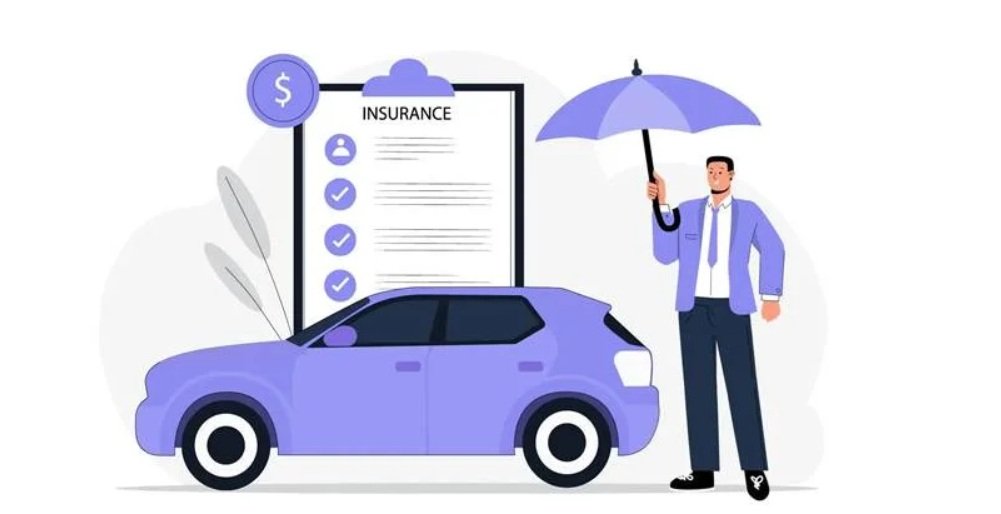Full coverage auto insurance provides comprehensive protection for your vehicle and financial security, but many drivers assume it’s beyond their budget. The truth is that cheap full coverage auto insurance is not only possible but accessible to drivers willing to shop smart and understand their options.
Understanding Full Coverage Auto Insurance
Full coverage typically includes three main components: liability coverage (required in most states), comprehensive coverage, and collision coverage. Liability protects others if you cause an accident, while comprehensive and collision protect your own vehicle from various types of damage.
Comprehensive coverage handles non-collision incidents like theft, vandalism, weather damage, and animal strikes. Collision coverage takes care of damage from accidents, regardless of who’s at fault. Together with liability coverage, these create a complete protection package.
The term “full coverage” isn’t standardized across the insurance industry, but most drivers use it to describe policies that include all three major coverage types plus additional protections like uninsured motorist coverage and personal injury protection where required.
Why Full Coverage Matters
Many drivers opt for minimum liability coverage to save money, but this approach can be financially devastating. Consider these scenarios:
Scenario 1: Your car is totaled in a collision you didn’t cause, but the other driver is uninsured. Without collision coverage, you’re responsible for replacing your vehicle entirely.
Scenario 2: A hailstorm damages your car extensively. Without comprehensive coverage, you’ll pay thousands in repair costs out of pocket.
Scenario 3: Your car is stolen and never recovered. Minimum liability coverage provides no compensation for your loss.
Full coverage protects against these situations, making it a wise investment even when budgets are tight.
Factors Affecting Full Coverage Costs
Understanding what influences your premium helps you find cheaper options:
Vehicle Value and Type
Expensive cars cost more to insure because they’re costly to repair or replace. However, vehicles with high safety ratings or anti-theft features may qualify for discounts.
Coverage Limits and Deductibles
Higher coverage limits increase premiums, while higher deductibles lower them. Finding the right balance is key to affordable full coverage.
Personal Factors
Your age, driving record, credit score (in most states), and location all affect pricing. While you can’t change some factors, others like maintaining a clean driving record are within your control.
Usage Patterns
How much you drive annually impacts your rates. Low-mileage drivers often qualify for significant discounts.
Strategies for Finding Cheap Full Coverage
Compare Multiple Insurers
Different companies weigh rating factors differently. A driver who pays high rates with one insurer might find significantly cheaper coverage elsewhere. Online comparison tools make this process quick and efficient.
Optimize Your Deductibles
Raising your deductible from $250 to $500 or $1,000 can substantially lower your premium. Ensure you can afford the higher deductible if you need to file a claim.
Bundle Policies
Many insurers offer substantial discounts for bundling auto insurance with homeowners or renters insurance. These multi-policy discounts can reduce your total insurance costs significantly.
Take Advantage of Discounts
Common discounts include:
- Safe driver discounts for clean driving records
- Good student discounts for young drivers with good grades
- Anti-theft device discounts
- Defensive driving course discounts
- Multi-vehicle discounts for insuring multiple cars
- Paperless billing and automatic payment discounts
Consider Usage-Based Insurance
If you’re a safe driver who doesn’t drive much, telematics programs can provide substantial savings. These programs monitor your driving habits and reward safe, low-mileage driving with lower premiums.
Alternative Payment Arrangements
Traditional insurance payment structures can make full coverage seem unaffordable due to large upfront costs. However, innovative payment solutions are changing this landscape:
No Down Payment Options
Some insurers now offer full coverage policies with minimal or no down payment requirements. This approach spreads the cost over manageable monthly installments without sacrificing coverage quality.
Flexible Payment Schedules
Rather than rigid monthly payments, some programs offer bi-weekly or semi-monthly payment options that align better with your pay schedule.
Interest-Free Financing
Programs that finance your insurance premium at 0% interest make full coverage more accessible without adding to the total cost.
State-Specific Considerations
Insurance requirements and costs vary significantly by state:
High-Cost States: States like Michigan, Louisiana, and Florida typically have higher full coverage costs due to factors like high claim rates, severe weather, or specific insurance regulations.
Moderate-Cost States: States like Texas, Illinois, and Georgia offer more moderate pricing while still requiring substantial coverage levels.
Low-Cost States: States like Maine, Vermont, and Iowa often have the most affordable full coverage options due to lower claim rates and less severe weather.
Understanding your state’s specific requirements helps you find the most cost-effective way to meet legal mandates while securing comprehensive protection.
When to Consider Dropping Full Coverage
While full coverage is generally recommended, there are situations where it might not make financial sense:
- When your vehicle’s value is very low (typically under $3,000-$4,000)
- When the annual cost of comprehensive and collision coverage exceeds 10% of the vehicle’s value
- When you have sufficient savings to replace the vehicle if needed
However, remember that even older vehicles can be expensive to repair, and replacement costs might be higher than expected in today’s market.
Red Flags When Shopping for Cheap Coverage
Be cautious of:
- Prices that seem too good to be true
- Companies with poor financial ratings or customer service records
- Policies with extremely high deductibles that make coverage essentially unusable
- Insurers that aren’t licensed in your state
Always verify that cheap coverage still provides adequate protection for your needs.
Making Full Coverage More Affordable Long-Term
Maintain a Clean Driving Record
Safe driving is the most effective way to keep insurance costs low over time. Even one accident or violation can significantly increase your premiums.
Improve Your Credit Score
In states where credit scoring is allowed for insurance purposes, improving your credit can lead to substantial savings.
Review Coverage Annually
As your vehicle ages, you might be able to adjust coverage levels or increase deductibles to reduce costs while maintaining adequate protection.
Consider Vehicle Choice
When buying a new car, research insurance costs beforehand. Some vehicles cost significantly more to insure than others in the same price range.
Technology and Full Coverage Insurance
Modern technology is making full coverage more affordable:
Telematics Programs: Monitor driving behavior to reward safe drivers with lower rates.
Digital Claims Processing: Faster, more efficient claims handling reduces overall costs.
Online Platforms: Streamlined processes reduce administrative costs, enabling lower premiums.
Companies like OCHO are leveraging technology to make full coverage auto insurance more accessible through innovative payment solutions and flexible terms that work with real-world budgets.
Building a Relationship with Your Insurer
Loyalty can pay off in the insurance world. Long-term customers often receive:
- Loyalty discounts
- Accident forgiveness programs
- Better claims service
- More flexibility during financial hardships
Cheap full coverage auto insurance is achievable with the right approach. By understanding coverage options, comparing multiple insurers, optimizing deductibles, and taking advantage of available discounts, you can secure comprehensive protection without breaking your budget.
The key is balancing cost with adequate coverage. While it’s important to find affordable premiums, ensure you’re not sacrificing essential protection that could leave you financially vulnerable in the event of an accident or other covered loss.
Refresh Date: August 21, 2025



